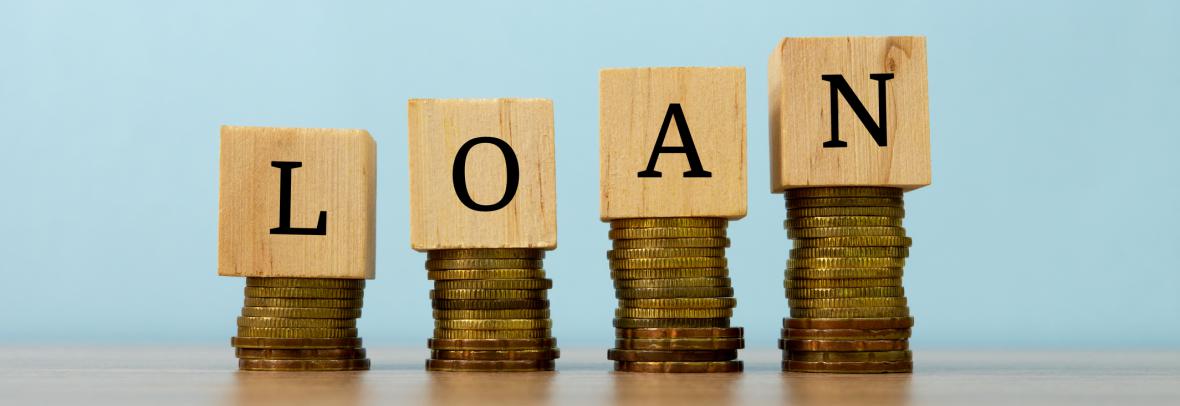
Credit Crunch Hits Residential and Commercial Alike
Lenders are skittish due to a bank run and higher interest rates. As a result, they raised the bar for loan approvals to businesses and homeowners.
WASHINGTON – Hear that? It’s the sound of credit crunching all across America. Okay, if not crunching, maybe squeezing. Or tightening. Or whatever euphemistic verb you might choose to communicate that, basically, it’s gotten more difficult to borrow lately.
Lots of measures have shown that businesses and consumers have found it more challenging to obtain financing recently, particularly in the wake of major regional bank failures in March. For example, recent data from the Federal Reserve show that commercial bank lending fell by over $100 billion in the two weeks ending March 29. That is the largest two-week cutback in overall bank lending, in dollar terms, in records going back half a century.
This same two-week period also saw the largest decline in commercial and industrial loans on record: and the largest decline on record in lending to real estate, and the largest decline on record in bank holdings of mortgages.
Which might not be surprising. Lending is down partly because there are fewer deposits to lend out: Since the Federal Reserve began to raise rates about a year ago, deposits leaving the banking sector have totaled nearly $1 trillion, according to calculations from Apollo chief economist Torsten Slok.
While some analysts have suggested that these metrics should be taken with a grain of salt – they may reflect some funky stuff happening in the numbers because of Silicon Valley Bank entering receivership – other “softer” measures also point to tightening credit conditions.
For example, the share of households reporting that it has become harder to obtain credit today than a year ago just rose to its highest level since at least 2013, when the Federal Reserve Bank of New York began tracking the question. Likewise, a rising share of businesses say their last loan was harder to get than previous attempts had been, according to the National Federation of Independent Business’s recent survey of small businesses.
Another telling (if anecdotal) detail: In my own visits to several cities lately, I’ve been struck by how many retail bank storefronts no longer prominently advertise the rates they charge for mortgages; instead, bank windows are emblazoned with the high rates they pay on certificates of deposit (CDs). That’s a sign that they’re trying harder to bring money in than to find ways to lend it out.
It’s possible, of course, that these trends are just a temporary blip, while everyone finds their bearings and sorts out their books post-SVB failure. After all, the collapse of SVB (and of Signature Bank) was an enormous shock to the system. Many uninsured depositors at small banks got spooked at once and started moving their money to bigger banks or to money-market funds. Maybe those trends will settle down, or even reverse, soon.
But some more enduring credit tightening, relative to the lax conditions of recent years, is inevitable. That is, after all, the whole point of the Fed’s interest rate hikes: to tighten financial conditions in service of cooling demand and thereby (hopefully) to lead consumers and businesses to stop pushing prices up so fast.
In other words, making it harder to borrow is a feature, not a bug, of the Fed’s inflation-fighting strategy.
The problem is that rate hikes are a blunt instrument, one whose deployment can cause a lot of collateral damage. The Fed’s late start to raising rates led the central bank to then play catch-up by raising rates more aggressively than usual, and we’re now starting to see the fallout, including on Main Street.
Lots of risks lurk ahead. Smaller banks make a lot of commercial real estate loans, for example. Many of those loans look unhealthy right now because of persistently high office vacancies; plus, a record number of commercial mortgages are set to mature in 2023. These borrowers may struggle to adjust to sharply higher rates, and analysts fear a wave of defaults.
Those defaults would be very painful for the smaller banks that hold those loans – as well as for the other customers who rely on such banks for their financing, which are disproportionately small businesses. In fact, in most U.S. counties, smaller banks provide roughly 90% of loans to small businesses, according to Goldman Sachs.
These kinds of factors might already be dragging on the economy. The Fed’s challenge right now is to ascertain how big that drag might be – and how close we already are to achieving the conditions necessary to imminently crush inflation. Which, for now, still remains too high, a fact that implies the need for more rate hikes.
On the other hand, Fed staff are already projecting a mild recession later this year. Which would suggest the Fed might want to hold back on raising rates further. To wit: A sizable contingent of traders predict that the Fed will be cutting rates by the second half of this year.
As I have been saying, virtually whatever the Fed chooses to do next, it will in some dimension be the wrong decision.
© Copyright © 2023 The Standard-Journal, all rights reserved.
